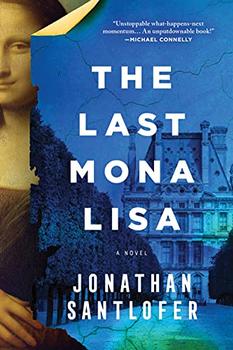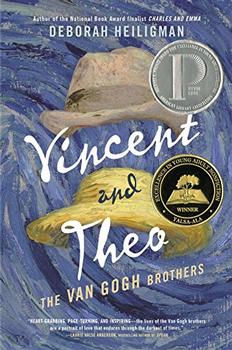Summary | Excerpt | Reviews | Beyond the book | Read-Alikes | Genres & Themes | Author Bio

He was history's most creative genius. What secrets can he teach us? The author of the acclaimed bestsellers Steve Jobs, Einstein, and Benjamin Franklin brings Leonardo da Vinci to life in this exciting new biography.
Based on thousands of pages from Leonardo's astonishing notebooks and new discoveries about his life and work, Walter Isaacson weaves a narrative that connects his art to his science. He shows how Leonardo's genius was based on skills we can improve in ourselves, such as passionate curiosity, careful observation, and an imagination so playful that it flirted with fantasy.
He produced the two most famous paintings in history, The Last Supper and the Mona Lisa. But in his own mind, he was just as much a man of science and technology. With a passion that sometimes became obsessive, he pursued innovative studies of anatomy, fossils, birds, the heart, flying machines, botany, geology, and weaponry. His ability to stand at the crossroads of the humanities and the sciences, made iconic by his drawing of Vitruvian Man, made him history's most creative genius.
His creativity, like that of other great innovators, came from having wide-ranging passions. He peeled flesh off the faces of cadavers, drew the muscles that move the lips, and then painted history's most memorable smile. He explored the math of optics, showed how light rays strike the cornea, and produced illusions of changing perspectives in The Last Supper. Isaacson also describes how Leonardo's lifelong enthusiasm for staging theatrical productions informed his paintings and inventions.
Leonardo's delight at combining diverse passions remains the ultimate recipe for creativity. So, too, does his ease at being a bit of a misfit: illegitimate, gay, vegetarian, left-handed, easily distracted, and at times heretical. His life should remind us of the importance of instilling, both in ourselves and our children, not just received knowledge but a willingness to question it - to be imaginative and, like talented misfits and rebels in any era, to think different.
The Leonardo who comes through in this account is a friendly and approachable genius. He appears comfortable with his homosexuality, unlike his contemporary Michelangelo. He's surrounded by students, assistants, and friends throughout his life-the very opposite of the brooding loner trope so often applied to artists. Isaacson does Leonardo a great service by humanizing him, and he clearly admires his subject's genius, which was all the more impressive since Leonardo had very little formal education. However the author sprinkles references to modern geniuses throughout and particularly in his didactic conclusion telling readers to be like Leonardo. Steve Jobs was undoubtedly a genius in his own right, but comparing men who lived almost 500 years apart is ahistorical since their times are so different, and too often it feels like Isaacson is plugging his earlier books.
These stumbles aside, the biography provides a rich and fascinating look inside one of the world's greatest minds, from his to-do lists to his masterpieces. It inspires wonder at what one person can do, and appreciation for all that this true Renaissance man accomplished...continued
Full Review
 (732 words)
(732 words)
(Reviewed by Rose Rankin).
The term "Renaissance man" means a polymath, or someone who excels at many fields. Few people earned that moniker as brilliantly as Leonardo da Vinci, who actually lived during the height of the Italian Renaissance. Making his accomplishments even more remarkable is the fact that he didn't receive much in the way of a formal education. Leonardo was rightfully proud that he didn't "accept dusty Scholasticism or the medieval dogmas that had accumulated since the decline of classical science and original thinking," as Walter Isaacson explains in his biography of the Renaissance master.
But while Leonardo himself was working and discovering, education in the Renaissance was undergoing important changes, ultimately setting the stage for the ...

If you liked Leonardo da Vinci, try these:

by Jonathan Santlofer
Published 2021
A gripping novel exploring the Mona Lisa's very real theft in 1911 and the present underbelly of the art world, The Last Mona Lisa is a suspenseful tale, tapping into our universal fascination with da Vinci's enigma, why people are driven to possess certain works of art, and our fascination with the authentic and the fake.

by Deborah Heiligman
Published 2019
From the author of National Book Award finalist Charles and Emma comes an incredible story of brotherly love.